Glen Denny: The Golden-Age Documentarian
Born February 8, 1939, the legendary Sierra climber, photographer, cameraman, and writer passed away on October 10, 2022. Chris Van Leuven remembers his storied life
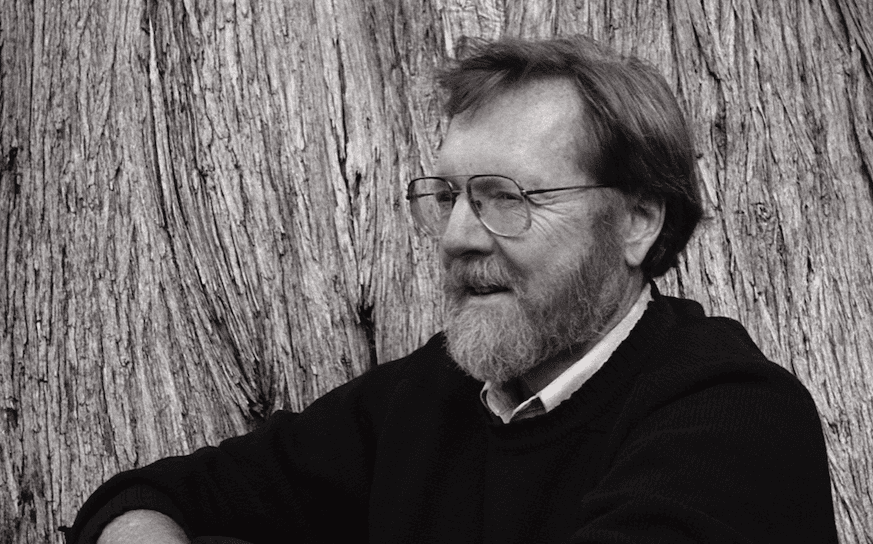 Photo by: Peggy Denny
Photo by: Peggy Denny
This past year, I worked with the Yosemite Climbing Association to build the YCA zine. Below is an excerpt from Yosemite Facelift: 20 Years of Stewardship. To buy the zine, visit this link.
I’ll never forget his gentle smile, soft half-squinting eyes, and the faint lift of his grin hidden beneath his white beard. That’s the Glen Denny I remember meeting, whether at his home in San Francisco with his wife, Peggy, by his side while I was working on a story for magazines or at events in Mariposa with the Yosemite Climbing Association.
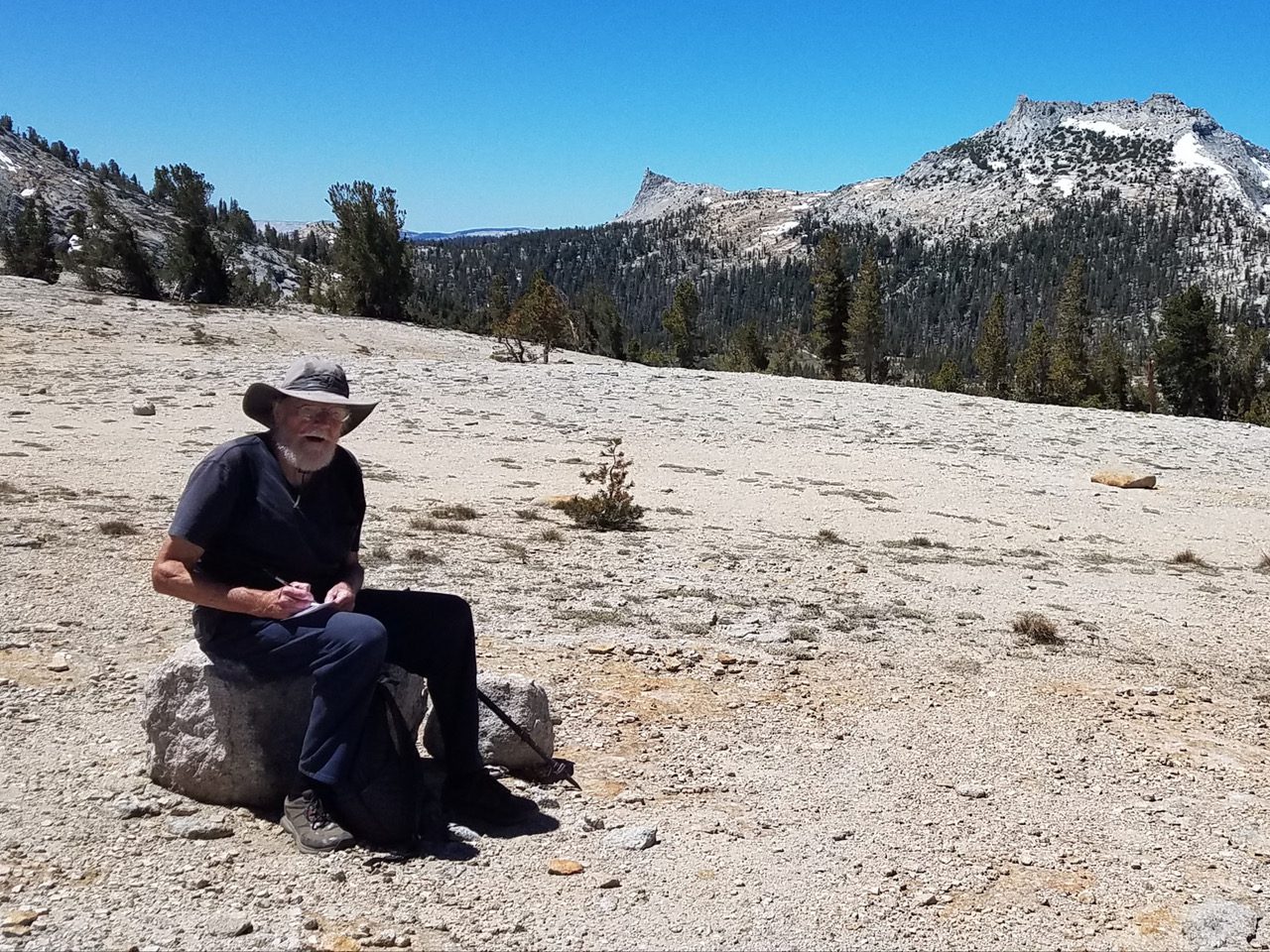
Fifteen years ago, in San Francisco, while I was on assignment for Climbing Magazine, we perused images on his coffee table as city traffic echoed outside his window. I recall that Glen’s place felt dark, while his pictures seemed so bright; his prints showed the white of the granite on the East Face of Washington Column and the West Face of Leaning Tower, both legendary first ascents he’d completed with Warren Harding. He and Harding also established the southwest face of Mount Conness in 1959, the east face of Keeler Needle in 1960, and the North Face of the Rostrum in 1962.
During my early years living in the park, from the 90s to the 2000s, his two now-free climbs, Astroman and the Rostrum, also became my favorites for their beauty, sheer difficulty, and paw-swallowing cracks.
Among his other significant first ascents were the West Face of Leaning Tower (1961), the Dihedral Wall (1962) on El Capitan, the Kor-Denny route on Sentinel Rock (1963), and the Prow on Washington Column (1969). In addition, he made the third ascent of the Nose along with Layton Kor and Steve Roper, cutting three days off the time of the second ascent. Five years later, Denny made the seventh ascent of the Nose while filming the movie El Capitan with Gary Colliver, Richard McCracken, and Lito Tejada-Flores.
As a pioneer during the Golden Age of Yosemite climbing in the late 1950s and 60s, armed with pitons, a hammer, and his Kodak Retina camera, Denny was there documenting it all.
Raised in Livingston, a small town in the Central Valley of California, Denny lived less than two hours from Yosemite, which he often visited with his family. He and his dad would also go fly fishing and hiking off-trail in the Sierra to find remote spots for angling. In 1958, at 19, Glen dropped out of college and moved to Yosemite, where he lived off and on for the next decade. As Glen drove into the Valley, he saw Warren Harding and his team completing the first ascent of the Nose. He instantly knew that he had come to the right place—and knew someday he wanted to be up there too.
He went to Camp 4 because he had heard that’s where the climbers stayed. He recognized Harding from newspaper photos and introduced himself. The veteran climber offered to teach him, starting with a day on Manure Pile Buttress. After that, Harding and Denny tackled more substantial climbs. Although Denny got his big wall start with Harding, he also partnered with many of the other iconic figures of the time, such as Royal Robbins, Chuck Pratt, Layton Kor, and Frank Sacherer.
Denny’s early jobs in Yosemite brought him closer to the heart of the climbing scene, working as a busboy at the Lodge Cafeteria and a bellhop at Yosemite Lodge. However, the real action happened across the street in Camp 4, where climbers like Yvon Chouinard could be heard assembling their gear. As Denny worked his way up to wine steward and bartender at the prestigious Ahwahnee Hotel, his climbing career and photography skills also advanced, thanks to his increased income, which allowed him to purchase better camera equipment.
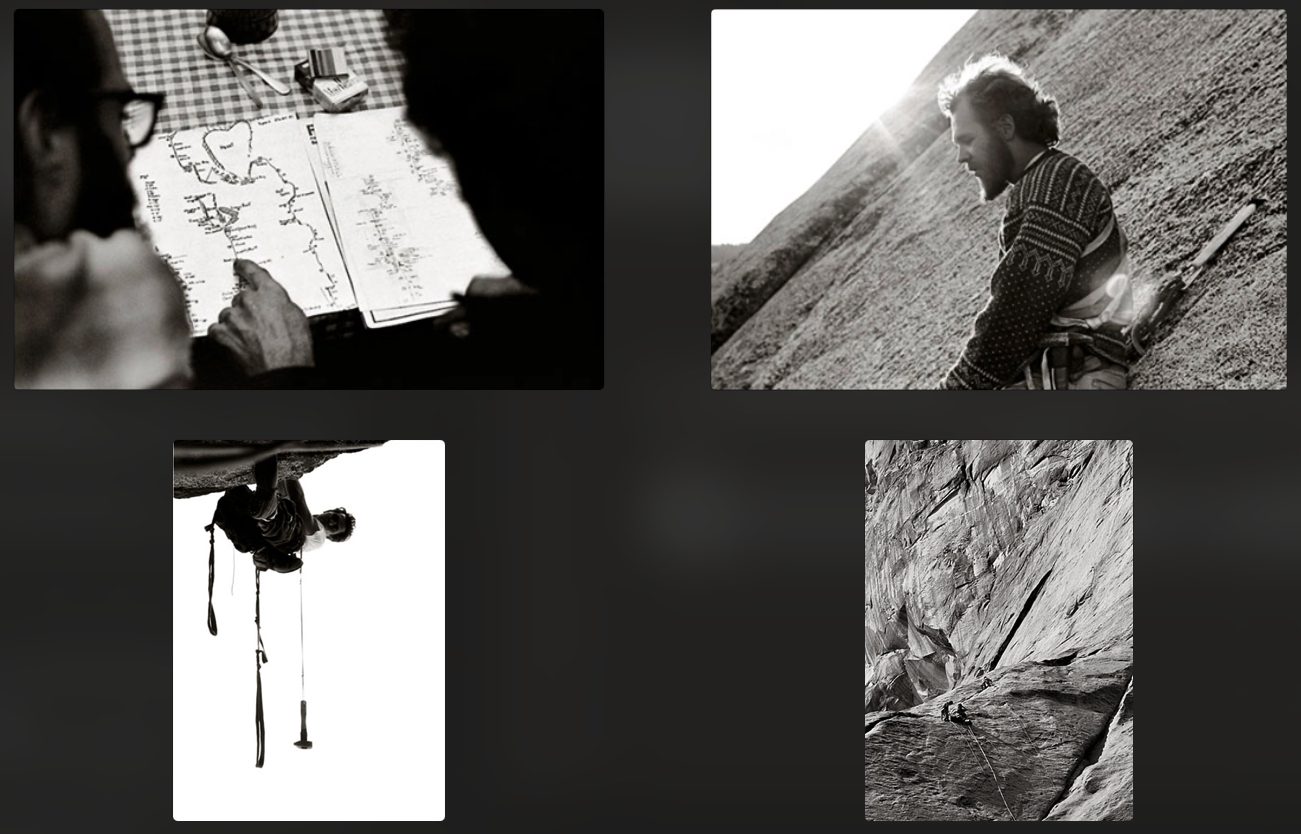
Ansel Adams’ Yosemite landscapes initially inspired his photography, but according to Glen’s widow, Peggy, he soon realized the uniqueness and importance of the climbing scene in the valley during the 1960s. Determined to preserve this remarkable period, he taught himself to capture stunning images. His photographic influences included Edward Weston, Robert Frank, and Henri Cartier-Bresson.
Denny began with simple equipment, such as a Kodak Retina, a small folding camera with no light meter. He told me, “A lot of my best photos from 1962 to 64 were taken with that camera. I had to guess the exposures, but it worked really well.” Generous tips from bartending at the Ahwahnee eventually enabled him to acquire a Nikon and several lenses.
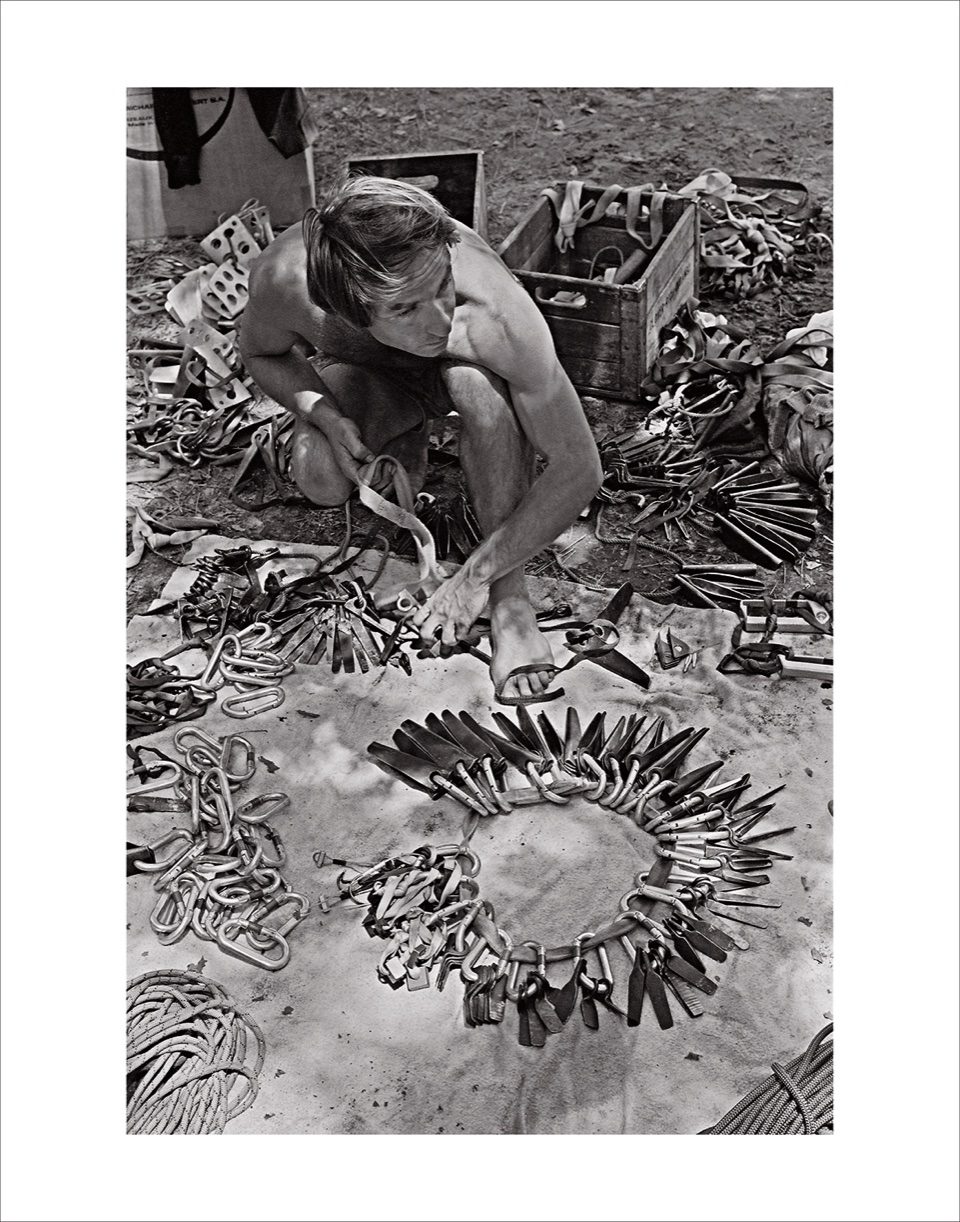
When I visited Glen’s home, we looked at some of his photos together. He recalled taking one of his favorite shots in the winter of 1963, when Yosemite Falls roared like dull thunder, and the roads were closed due to flooding. Denny climbed over saturated boulders and braved a massive storm to position himself by the Lower Falls, capturing its ferocity. Glacier Point Apron loomed in the distance, shrouded in clouds, while Staircase Falls peeked through the mist. In the foreground, waves crashed chaotically, resembling exploding fireworks. Denny also pointed out an image he had taken of Chouinard with his handmade gear spread around him in Camp 4. Peggy noted that Denny’s photography often included human elements, and he learned much about striking the right balance from studying The Family of Man exhibition catalog, a groundbreaking 1955 photography show curated by Edward Steichen at the Museum of Modern Art in New York City.
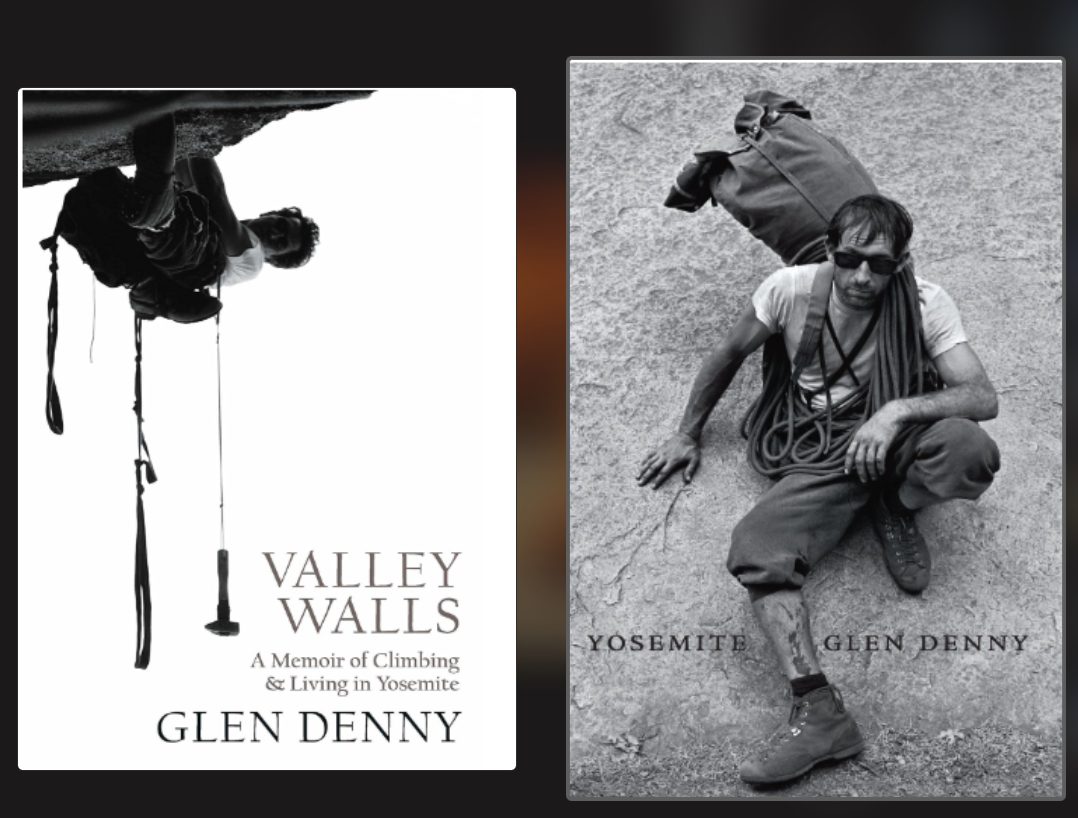
These photographs, stories, and more are immortalized in Denny’s two books: Yosemite in the Sixties, published by Patagonia, Inc., and T. Adler Books in 2007, and Valley Walls: A Memoir of Climbing and Living in Yosemite, published by Yosemite Conservancy in 2016. The former is a coffee table book depicting the Golden Age of American climbing, while the latter reveals Denny’s personal journey and experiences in his own words.
Glen’s life took him from the climbing scene in Yosemite to the Bay Area, where he studied film and photography at San Francisco State, freelanced as a mountaineering cinematographer, and met Peggy while auditing classes at Stanford. They married in 1982 and remained inseparable for over 40 years. Throughout their lives, Glen and Peggy climbed with friends and family, including their son Scott. Denny continued working on his writings and photography, enjoying a renaissance of interest in his work thanks to the efforts of Steve Roper, Dean Potter, and Ken Yager.
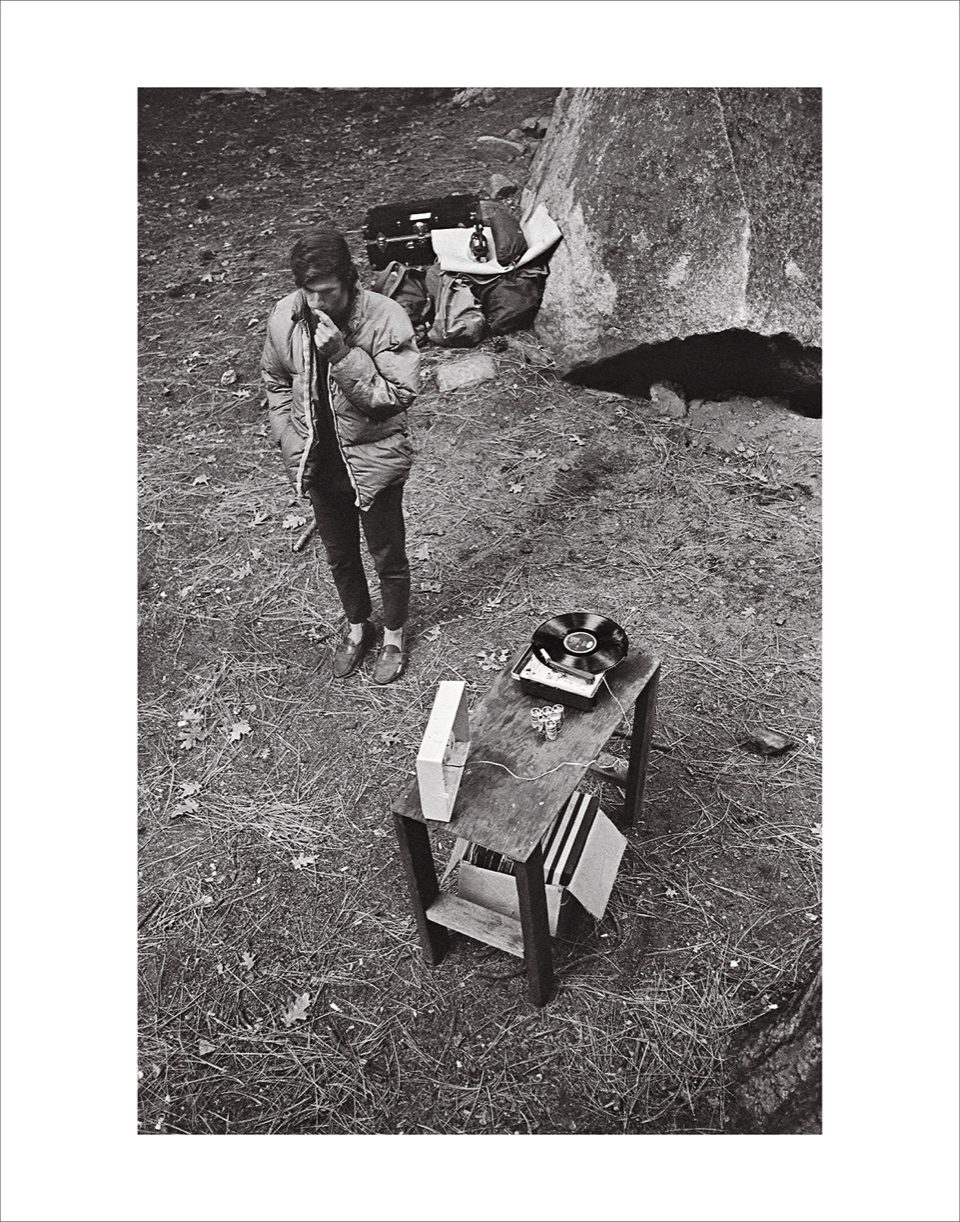
In 2017, Glen faced major health challenges, which included kidney failure that necessitated thrice-weekly dialysis sessions. Peggy, recounted, “He was completely debilitated for a time. He literally could not sit up in bed at first, yet he was absolutely determined to build himself up again and get back to the mountains.” Glen’s unwavering determination propelled him to overcome his physical limitations. He began walking tirelessly, starting with just a few blocks around San Francisco. Gradually, he progressed to undertaking impressive urban hikes that he meticulously planned to encompass the maximum amount of uphill terrain and distance, covering as many as 17 different summits within the city’s limits in a single day.
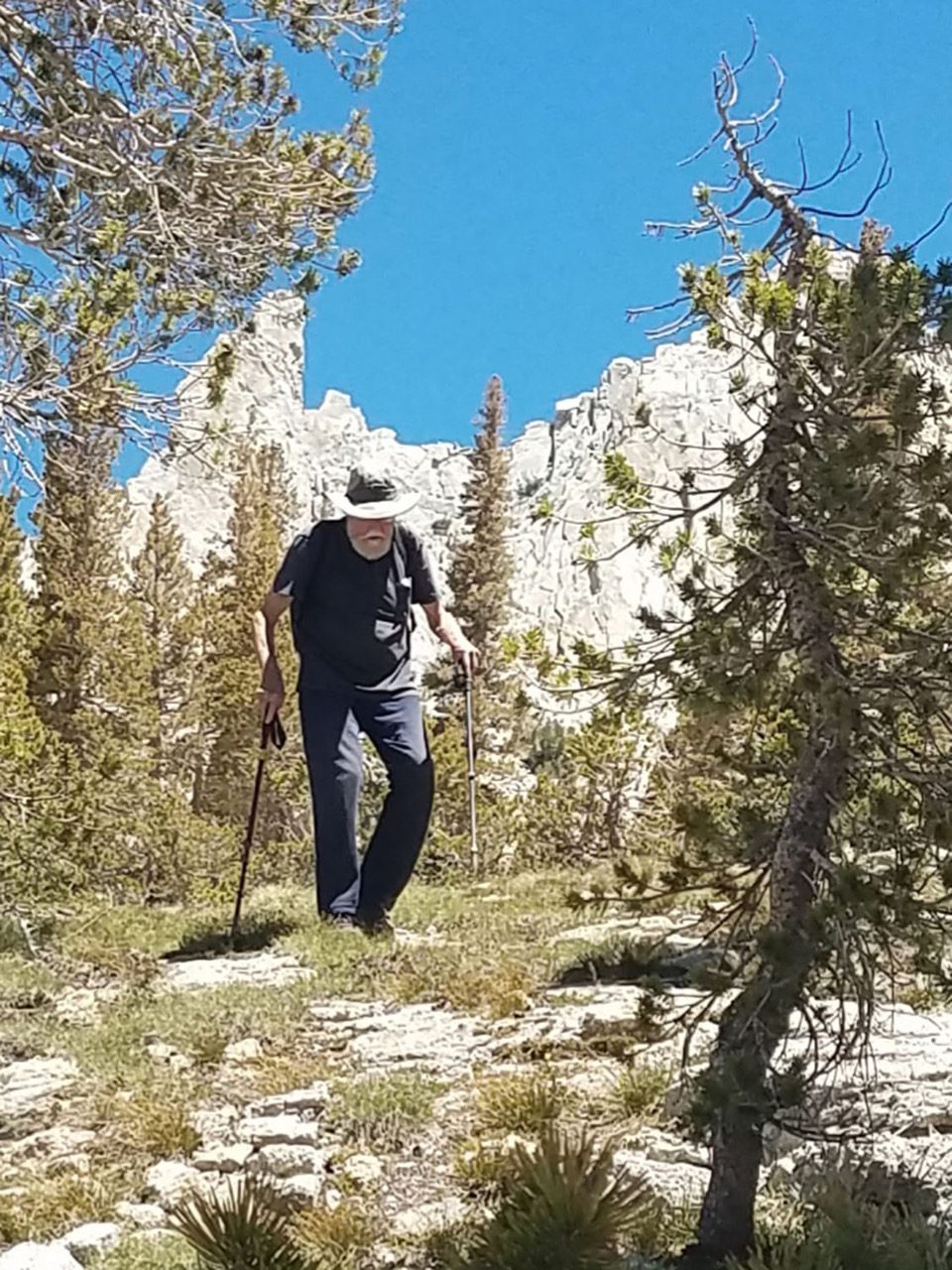
Throughout 2017 and 2018, Glen and Peggy organized hiking trips on the east side of the Sierra, scheduling them around his dialysis appointments. In 2019, Peggy generously donated one of her kidneys to Glen. A mere three months after his transplant, Glen triumphantly returned to the great outdoors. Peggy remarked, “It was a real liberation for him. Like starting a new life in his eighties.” Glen shared with me in 2019, “In my memoir, I talk about rushing up the Nose, but I wanted to take my time.” He emphasized his appreciation for the simple pleasure of observing birds soaring in the sky while he was perched high on the wall. During the filming of El Capitan, Glen captured some of the most iconic scenes, such as the breathtaking helicopter footage of the King Swing. He also focused on the birds, masterfully capturing swifts darting in front of the camera, gracefully slipping into vertical cracks, spiraling towards the earth, and then effortlessly gliding away.
Tragically, Glen passed away in October 2022. “Completely unexpected,” said Peggy. “Just two weeks earlier, he had been hiking in the Sierra and was feeling healthy and strong. Then he became ill with a fever of unknown origin.” Despite multiple visits to the emergency room, it wasn’t until Glen was admitted to the hospital that doctors diagnosed him with meningitis. The cause remained a mystery until they discovered it was the result of the West Nile virus, transmitted by local mosquitoes.
Peggy poignantly reflected, “So, after all the things Glen survived in his climbing years, like rocks falling on him and lightning storms on big walls, he was struck down by a mosquito in Modesto.”
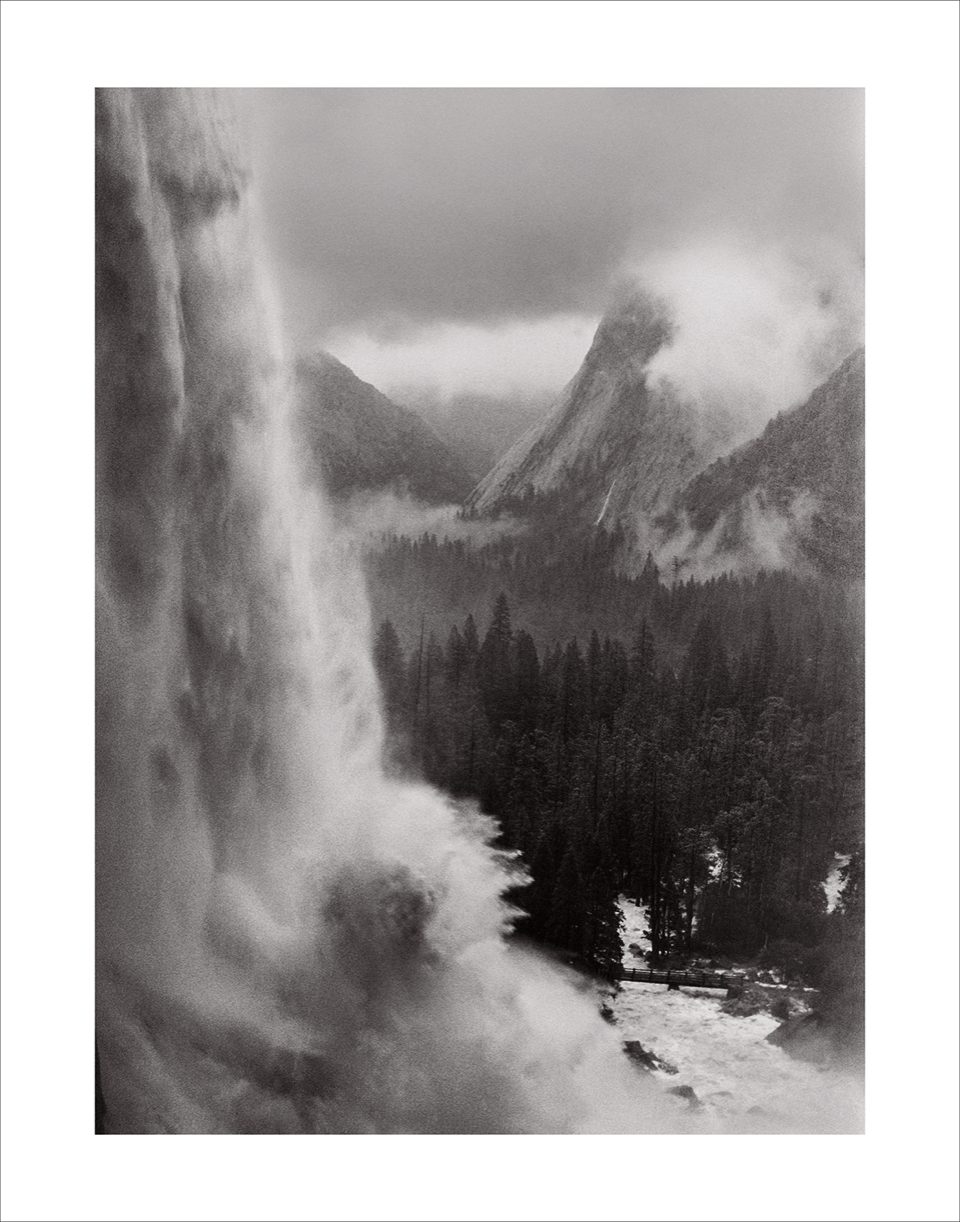
She explained that the antirejection drugs he took for the kidney transplant had weakened his immune system, leaving him vulnerable to infection. As Peggy looked back on Glen’s illustrious career, she emphasized that his main priority was preserving the legacy of the Golden Age and the trailblazing pioneers of that era. “He felt they were such an amazing bunch of people, all of them different. All of them just exploring things in their own way.” Glen’s deep affection for these individuals and their accomplishments is evident throughout his stories in Valley Walls. The stunning photographs and heartfelt words in his work underscore the profound connection he felt with the place and its history.
To read more about Yosemite’s climbing history, check out the YCA Yosemite Facelift: 20 Years of Stewardship.


